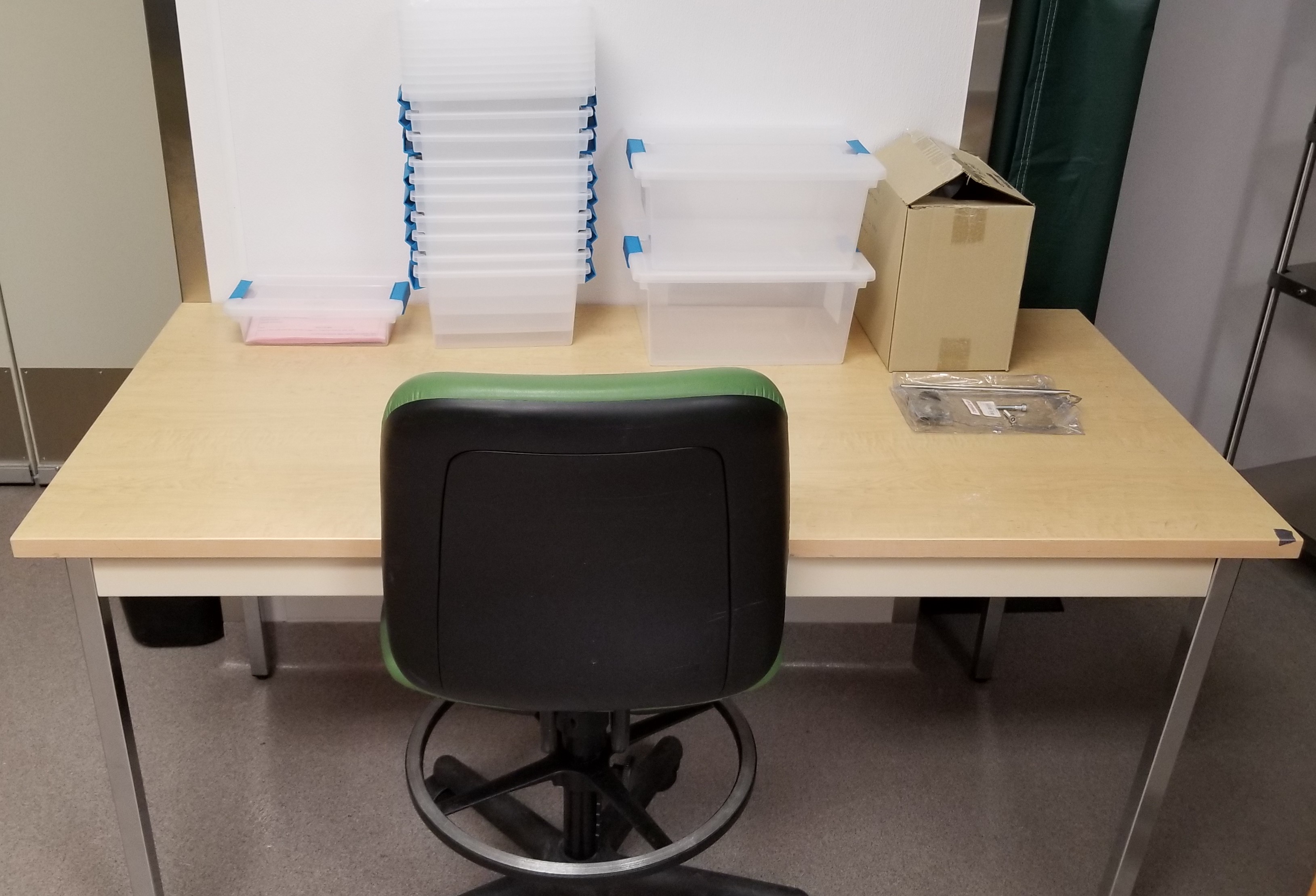
User Guide –
During Beamtime
Emergency
Emergency Number for Fire, Ambulance and Police: dial 9–911 from any CLS desk phone.
University of Saskatchewan Protective Services: From CLS Phone: 9-306-966-5555
Floor Coordinator (FC):
• From CLS Phone: 3639
• From External Phone: 306-657-3639
▪ Report any accidents or incidents
▪ Large or dangerous chemical spill
▪ Any fault lights or technical problems on the ACIS Control Panel
▪ For assistance when beamline staff are unavailable
▪ If appropriate, the FC will contact the Beamline Staff
Sample Preparation
When working in the labs please comply with the following rules:
- Users must complete Laboratory Safety Training.
- Valid Laboratory Permit is required for experiment. When signing on your electronic permit in User Portal, you should select the lab, time, duration, and persons who will be using the labs.
- All sample preparation needs to be performed in designated lab.
- Must wear lab coat and safety glasses while working in the lab.
- No food or drinks are allowed in labs or experimental hutches.
- Label any samples placed in lab fridge, freezer or bench. If you have biohazardous and biological samples, they must be placed in secondary containers that are provided in Small Animal Lab (Room 1112). There are pink cards for each of the labs (1112 and 1113). The pink card should be filled in and placed inside the container. You can place the secondary container in fridge or freezer.
- All samples must be removed from BMIT labs after the end of beamtime. Labs must be cleaned and tidy by the time your beamtime ends in order for next user to use the lab and hutch.
- Please note that BMIT has two beamlines that work simultaneously, please be courteous to the neighboring research team that is using the other lab and beamline.
Secondary Container Station

Experiment Setup
BMIT setups are dynamically changed depending on the experiments’ requirements. Experimental Setup time is part of your beamtime. This includes setting up your detector system, sample stages, quality assurance tests. Normally the setup takes between 1 to 4 hours. We strive to keep the setup time to as short as possible, however, in case of complex setups, the time could take up to one shift.
Working Around the Clock
After the experimental setup is complete, your primary point of contact will instruct you on how to scan, change samples, process data or stop the scan in case of emergency. Users should pay close attention and take notes. The beamtime is precious and the time should be used completely and fruitfully. CLS runs 24 hours and it is users' responsibility to provide enough qualified individuals to run the experiment for the duration of the beamtime. Below are some rules in that regard:
- Minimum one person be present per allocated shift
- Additional personnel required for live animal experiments
- Complete “Beamline Unattended” For any planned absence from beamline of more than 30 minutes in the User Portal.
Cleaning Up
Like the experimental setup, disassembling the setup is part of your beamtime as well. When your beamtime ends following steps must have been completed:
- All samples and equipment be removed from the hutches.
- All samples and equipment be removed from the labs.
- Lab benches and used equipment should be cleaned properly and organized.
- If you have generated chemical, biological, or biohazardous waste, please let your primary point of contact know.
- All tools used in the workshop, labs, or hutch should be retuned to the original place.
- Remove your food, and drinks from the BMIT lounge.
- Remove all your notes, hard drives, and belongings from the control room.
Data generated at BMIT is quite large and transfer of files will take time. Ideally data transfer should be performed during your beamtime. At no point after your beamtime connecting a hard drive to computers in control room is allowed. If you need to copy your files after your beamtime ask your primary point of contact.